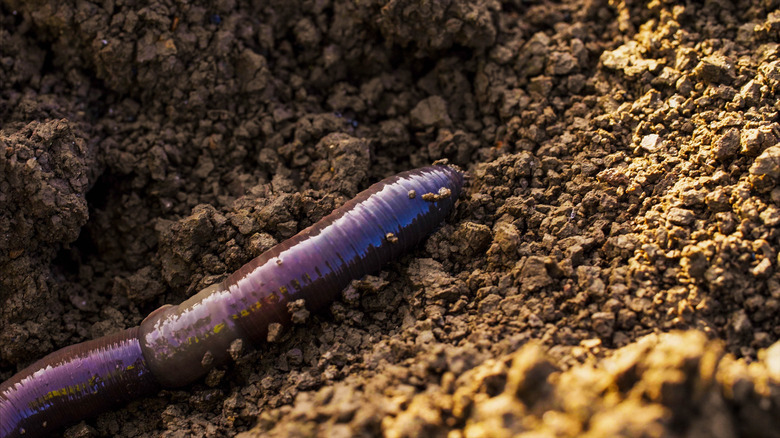Earthworm Phylum Characteristics
Earthworms are segmented worms of the phylum Annelida, which encompasses about 9,000 species and three classes. Class Oligochaeta are the freshwater worms (including earthworms); class Polychaeta are the marine worms; and class Hirudinea are the leeches. There are several characteristics common among all annelids, which serve to define the phylum.
Metamerism
Metamerism
All annelid bodies are divided serially into segments called metameres. Circular grooves on the outside of their bodies, annuli, separate the metameres. Each segment contains a representative of all major organ systems. Annelids are bilaterally symmetrical: if you divide the animal down the horizontal axis, each half will look like a mirror image of the other half.
Body Wall
Body Wall
The body wall has an outer circular muscle layer and inner longitudinal muscle layer. By contracting the longitudinal body wall muscles, the body shortens and fattens. When the circular muscles contract, the body lengthens and thins. This allows the worm to burrow, move along the ground or search surrounding water for prey. They have a moist outer cuticle that is secreted by the epithelium which keeps them from desiccating, or drying up.
Chitinous setae
Chitinous setae
Annelids are sometimes called "bristle worms" since they have setae, small hairlike projections from their bodies that aid in burrowing in the ground or swimming through water. They also act to anchor some species in the ground, making it more difficult for predators to pull them from their burrows. Setae are made of chitin, a tough polysaccharide also found in arthropod exoskeletons. Leeches are the exception as they do not have setae.
Coelom
Coelom
The coelom is the body cavity. In annelids, it is well developed and divided by septa, or membranes. The coelom is full of fluid, and acts like a hydrostatic skeleton. Since the coelom is divided by septa, the worm can move restricted areas of its body separately.
Closed Circulatory System
Closed Circulatory System
The circulatory system is closed, meaning that the blood is enclosed in muscular blood vessels. They have aortic arches, which act as hearts to pump the blood.
Complete Digestive System
Complete Digestive System
The digestive system in is complete: it includes a separate mouth and anus, connected by a foregut, midgut and hindgut.
Respiration
Respiration
Respiration in annelids takes place directly through the skin, through gills or through parapodia, which are leg-like structures found in some annelids. Earthworms take in oxygen and give off carbon dioxide directly through their skin.
Excretory System
Excretory System
In each metamere, there are a pair of nephridia, which are a type of primitive kidney. Coelomic fluid is filtered through the nephridia via the nephrostome. The nephridia resorb nutrients in the nephridial duct, and the waste is excreted through the nephridiopore, located by the ventral setae on the earthworm.
Nervous System
Nervous System
There is a double ventral nerve cord with a pair of ganglia and lateral nerves at each metamere. The annelid brain is rudimentary, composed of a pair of dorsal cerebral ganglia.
Sensory and Reproductive System
Sensory and Reproductive System
All annelids have taste buds, photoreceptor cells to detect light, and a system of tactile organs to feel the world around them. Some, but not all, have eyes with lenses. Annelids have separate sexes or are hermaphroditic, meaning the same animal has features of both sexes. Earthworms develop by spiral cleavage and mosaic development, but some annelids reproduce asexually by budding, and some have a larval form called the trochophore.
References
- "Integrated Principles of Zoology;" Cleveland Hickman et al; 2004
Cite This Article
MLA
Foulds, David. "Earthworm Phylum Characteristics" sciencing.com, https://www.sciencing.com/earthworm-phylum-characteristics-8209511/. 22 November 2019.
APA
Foulds, David. (2019, November 22). Earthworm Phylum Characteristics. sciencing.com. Retrieved from https://www.sciencing.com/earthworm-phylum-characteristics-8209511/
Chicago
Foulds, David. Earthworm Phylum Characteristics last modified March 24, 2022. https://www.sciencing.com/earthworm-phylum-characteristics-8209511/
